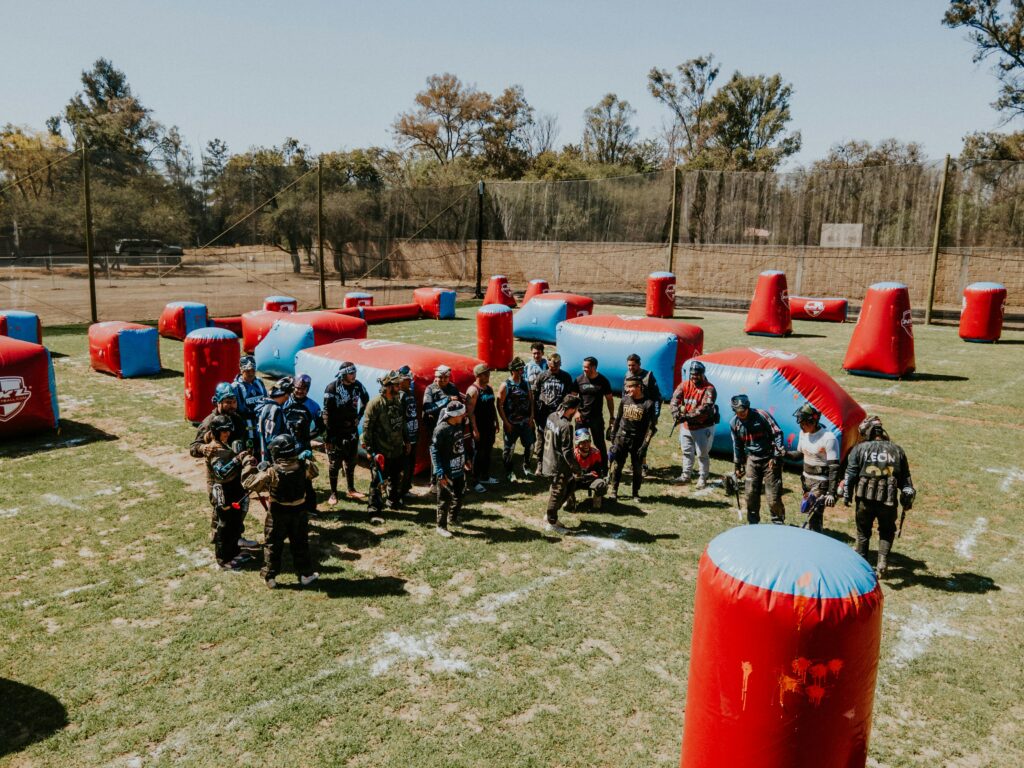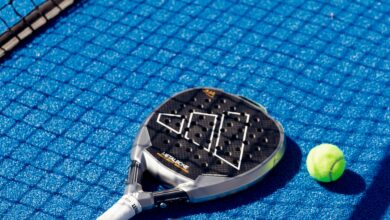Best Sports Gear

More than just clothing and equipment, the best sports gear is the foundation of every athlete’s success. Your gear defines your performance, comfort, and confidence, whether you’re a professional player or a weekend fitness enthusiast. Having the right gear is no longer a luxury in the rapidly changing sports industry. Science, creativity, and fashion have all been incorporated into sports gear over the years. Modern equipment enables athletes to achieve new levels of excellence, ranging from AI-powered wearables that analyze movement to high-performance shoes that lower the risk of injury. Let’s investigate the significance of the best sports equipment and the ways in which it continues to revolutionize global athletics.
Contents
- 1 1. The Power of Proper Sports Gear
- 2 2. Building Blocks of the Best Sports Gear
- 3 3. The Role of Technology in Modern Sports Gear
- 4 4. Comfort and Ergonomics in Sports Gear Design
- 5 5. Durability and Long-Term Value
- 6 6. The Safety Advantage of Modern Sports Gear
- 7 7. Sustainability and Eco-Friendly Innovations
- 8 8. Leading Global Brands Defining the Industry
- 9 9. Smart Sports Gear and Digital Transformation
- 10 10. The Future of Sports Gear Innovation
- 11 11. Choosing the Right Sports Gear for You
- 12 12. Sports Gear as a Confidence Booster
- 13 13. How the Pandemic Changed Sports Gear Trends
1. The Power of Proper Sports Gear

The significance of sports gear lies in its ability to balance comfort, functionality, and protection. You can focus more on your game and reduce your risk of injury by wearing the appropriate gear. For instance, moisture-wicking fabrics keep the body cool during prolonged sessions, while lightweight running shoes improve stride length and reduce fatigue. The best sports equipment conforms to your body’s natural movement, ensuring optimal performance and safety. Pros and amateurs are separated by this invisible line.
2. Building Blocks of the Best Sports Gear

Every sport requires a combination of essentials that enhance performance. Among these fundamentals are: Footwear: Designed for grip, balance, and injury prevention.
Apparel: Breathable fabrics like polyester and spandex promote flexibility.
Gear for Protection: Guards, pads, and helmets protect against impact. Sports accessories range from digital fitness trackers to hydration bottles. Equipment: Balls, rackets, bats, and training resistance tools.
Each component has a function, and when put together, they form the ideal ecosystem for any athlete.
3. The Role of Technology in Modern Sports Gear

Technology is the driving force behind today’s sports equipment. Smart sensors, novel materials, and research on biomechanics have made ordinary products into tools that improve performance. Examples from today include: Smart Shoes: Determine the power output, balance, and number of steps. Compression wear makes use of cutting-edge fabric to improve blood flow. Equipment printed in 3D: Helmets, gloves, and footwear can be made to fit you exactly. Wearables with AI: Real-time measurements of heart rate, calories burned, and posture. These innovations make the best sports gear not just reactive but predictive — adjusting to your needs while improving endurance and safety.
4. Comfort and Ergonomics in Sports Gear Design
![]()
How well an athlete performs under pressure is influenced by comfort. No matter how skilled you are, discomfort can ruin focus and limit output. Ergonomics is therefore a top priority in gear design. Shoes are now engineered with arch-support cushioning, apparel with seamless stitching to prevent chafing, and gloves shaped according to hand curvature. Athletes are better able to maintain form, stamina, and motivation for longer when they are at ease. Because it feels so natural, the best sports gear makes you forget you’re even wearing it.
5. Durability and Long-Term Value
Durability sets premium sports gear apart from cheap alternatives. Quality equipment doesn’t just survive wear and tear; it maintains consistent performance over time. To extend a product’s lifespan, manufacturers employ reinforced stitching, abrasion-resistant fabrics, and impact-absorbing foams. Athletes can rest assured and be prepared season after season thanks to the best sports equipment’s ability to withstand extreme conditions such as friction, high-impact training, or heavy rain. Spending more on high-quality gear often means saving money in the long run.
6. The Safety Advantage of Modern Sports Gear
Sports equipment is built on safety. Athletes face countless physical challenges, and proper gear significantly reduces the risk of injury.Helmets prevent head trauma, knee pads protect joints, and mouthguards safeguard teeth and jaw. Protective layers that do not impede movement but intelligently absorb shock are examples of the best sports equipment that combines performance and safety. Athletes can monitor collisions and recover faster thanks to modern innovations like impact sensors in helmets and padded compression clothing. Safety-focused gear distinguishes responsible athletes from reckless ones in every sport.
7. Sustainability and Eco-Friendly Innovations
Demand for eco-friendly sports equipment rises with environmental awareness. Leading brands are now turning to eco-friendly materials like recycled polyester, bamboo fiber, cork, and bio-based foam. Without sacrificing quality, sustainable gear reduces waste and pollution to a minimum. Adidas’ Parley shoes made from ocean plastic and Nike’s Move to Zero campaign are examples of eco-revolution in sports. A new generation of environmentally conscious athletes is being inspired by the best sports gear of today, which combines high performance with environmental responsibility.
8. Leading Global Brands Defining the Industry
The market for premium sports gear is dominated by a few pioneering brands that continuously innovate:
Nike: Known for its AI-enhanced shoes and advanced cushioning technology. Adidas is a master of performance-driven footwear and sustainability. Under Armor focuses on cooling fabric technology and compression wear. Puma combines athletic engineering with streetwear aesthetics. Decathlon: Provides options for all sports that are durable and affordable. These businesses spend millions on research and development to break new ground and make the best sports equipment available to athletes all over the world.
9. Smart Sports Gear and Digital Transformation
Sports equipment is now smarter than ever, thanks to the growth of digital technology. Technology is influencing how athletes train and recover, from AI-driven data analytics to connected wearables. Some examples are: Smart helmets that can tell how hard an impact is. oxygen-level-monitoring fitness watch,s Basketballs that are smart and monitor shot accuracy. AI-powered suits that analyze motion and posture.
Athletes can gain a real-time understanding of their bodies thanks to this integration. The best sports equipment not only provides protection but also education and empowerment.
10. The Future of Sports Gear Innovation
Personalization, automation, and immersive training experiences are driving the future of sports gear. Among the future trends are: Fabrics that automatically repair minor tears are examples of self-healing materials. Gear made specifically for each athlete’s anatomy can be created using custom 3D printing. Fabrics made with nanotechnology offer superior strength, adaptability, and temperature control. Integration of AR and VR includes gear feedback and virtual training sessions. The term “performance” will be reinterpreted by these technologies. The best sports equipment will soon feel more like a seamless, intelligent, and adaptive extension of your body.
11. Choosing the Right Sports Gear for You
When choosing sports equipment, fit, comfort, and purpose come first. Always consider:
Your kind of sport: sneakers for basketball are different from running shoes. Body Mechanics: Choose products that complement your posture and flexibility.
Climate: Comfortable in the summer and insulated in the winter. Material: The best materials are those that are light, stretchy, and resistant to moisture. Reputation of the Brand: Dependable brands guarantee durability and safety testing. Your performance will improve as a result of a well-chosen gear setup, minimizing strain and fatigue. With the best sports equipment, each workout is both productive and enjoyable.
12. Sports Gear as a Confidence Booster
In addition to boosting performance, the right gear also boosts self-confidence. Athletes feel capable and ready to perform when they wear high-quality, comfortable clothing or footwear. Psychologists call this the “enclothed cognition effect,” where what you wear influences how you behave. When athletes wear professional-grade gear, they subconsciously step into a performance mindset. As a result, the best sports equipment is a physical and mental tool for success.
13. How the Pandemic Changed Sports Gear Trends
Home workouts, digital coaching, and solo sports all saw significant growth as a result of the COVID-19 pandemic. Gear design was also influenced by this change. Brands started focusing on versatile, at-home, and digital-ready equipment — resistance bands, yoga mats, adjustable dumbbells, and smartwatches surged in popularity. Face covers that are breathable and antibacterial fabrics have entered the mainstream of sportswear. Today’s best sports equipment is adaptable and works equally well indoors, outdoors, and in gyms.
Conclusion
The best sports gear does more than just look good; it also helps you reach your full potential, keeps you safe, and keeps you performing at your best. Every aspect of your gear, from comfort and technology to sustainability and self-assurance, contributes significantly to your success. Sports equipment will become even more integrated with digital intelligence as innovations continue to advance, enabling athletes to push the limits like never before. Investing in the best sports equipment is an investment in yourself—investing in your performance, safety, and future in the sports world—whether you’re a novice or an elite competitor.
FAQs
Q1. What makes sports gear “the best”?
Technology, comfort, durability, and safety all come together in the best sports equipment. It is made to improve performance while reducing the risk of injury.
Q2. How does technology influence modern sports gear?
Modern training and recovery gear is more precise, personalized, and efficient thanks to AI sensors, smart fabrics, and 3D printing.
Q3. Why is sustainable sports gear becoming popular?
Eco-friendly sports gear uses recycled and renewable materials, helping protect the planet while maintaining top performance standards.




